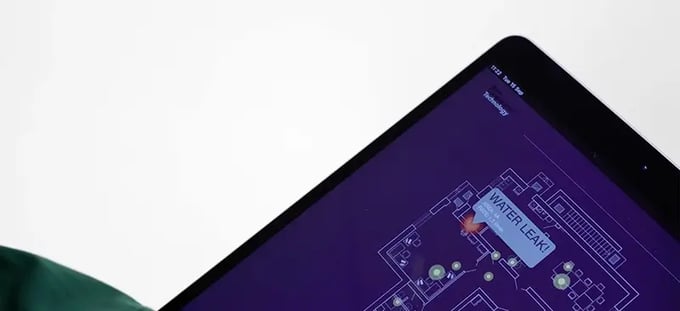The integration of technology into smart buildings and homes has led to an increase in intelligent interfaces becoming a part of people’s daily interactions. Smart interfaces, such as light switches, keypads and buttons, have the potential to bring significant benefits in terms of finances, productivity and health to our surroundings. The advantages of interfaces, such as improved energy efficiency, comfort, and new ways to interact with the environment, are becoming more and more apparent.
The main challenge in this context is to develop cost-effective solutions that can blend seamlessly into our environment, such as floors, walls, furniture and spaces. These interfaces should not only offer design freedom during the manufacturing process but also provide flexibility for long-term use. Smart surfaces open up a variety of interactive possibilities on different materials, providing a seamless experience.
Advantages of smart interfaces
Smart surfaces have the potential to revolutionize our environment by turning every surface into an interface. For example, a wall can become a touch screen, a tabletop can recognize and interpret a gesture control, or a floor can communicate and send data to a computing device, mobile device, App, or building management dashboard. Integrating smart interfaces can bring a range of benefits to spaces such as:
- Health benefits: Improving hygiene through touchless interfaces and cleaning event monitoring.
- Built-in interaction: Adding gesture-based interaction to existing surfaces or materials through smart interfaces for keypads, controls, or light switches built into furniture or walls.
- Aesthetics: ‘Invisible’ integration through the use of everyday materials to design discrete and low-cost smart surfaces.
- Real-time data: Sending data analysis from touch, proximity, or gesture events to the cloud in real-time for immediate action or optimization.
LAIIER's smart interface technology
LAIIER's technology makes it possible to turn any wall, floor, or material into a smart surface. With over a dozen functionalities available, our smart interface technology can transform most materials into an input device to interpret gestures and collect data. Our smart sensors deliver high-quality data to the cloud so that touch and proximity events can be monitored and reported back to building management systems, providing a reliable, cost-effective solution for designing and integrating interfaces into any surface or material.
Our smart sensors deliver high-quality data to the cloud so that touch and proximity events can be monitored and reported back to building management systems, providing a reliable, cost-effective solution for designing and integrating interfaces into any surface or material. Our technology’s key advantages are the following:
- Design freedom: Printed sensor technology means interfaces can be applied to a wide range of materials, allowing for integration into smooth or three-dimensional shapes and surfaces.
- Material agnostic: Capacitive sensing technology allows our smart interfaces to work through other materials, so sensors can be hidden behind other materials and surfaces.
- Reprogrammable: Unique sensor patterning means our interfaces can accommodate custom gestures and outputs, allowing for long-term flexibility and customization to a specific gesture.

The future is in smart surfaces
LAIIER's goal is to create smart interfaces that can improve our experiences as we interact with the spaces and objects around us. We believe that these interfaces are not limited to computers and electronic devices and do not have to compromise the design and feel of the spaces we occupy. We are starting with water leak detection and working with industry-leading partners to build user interfaces in our world.